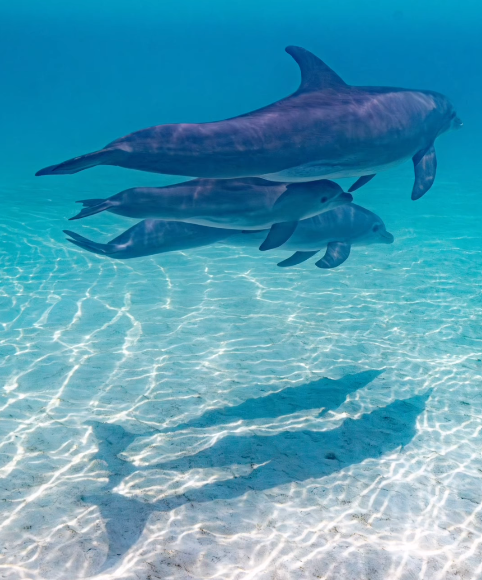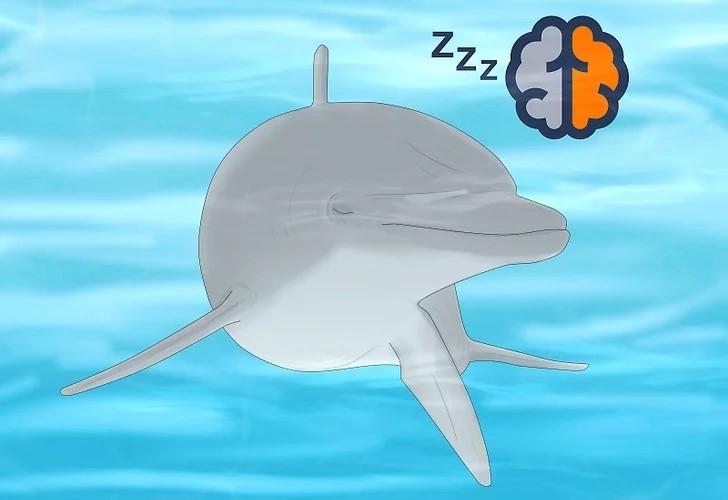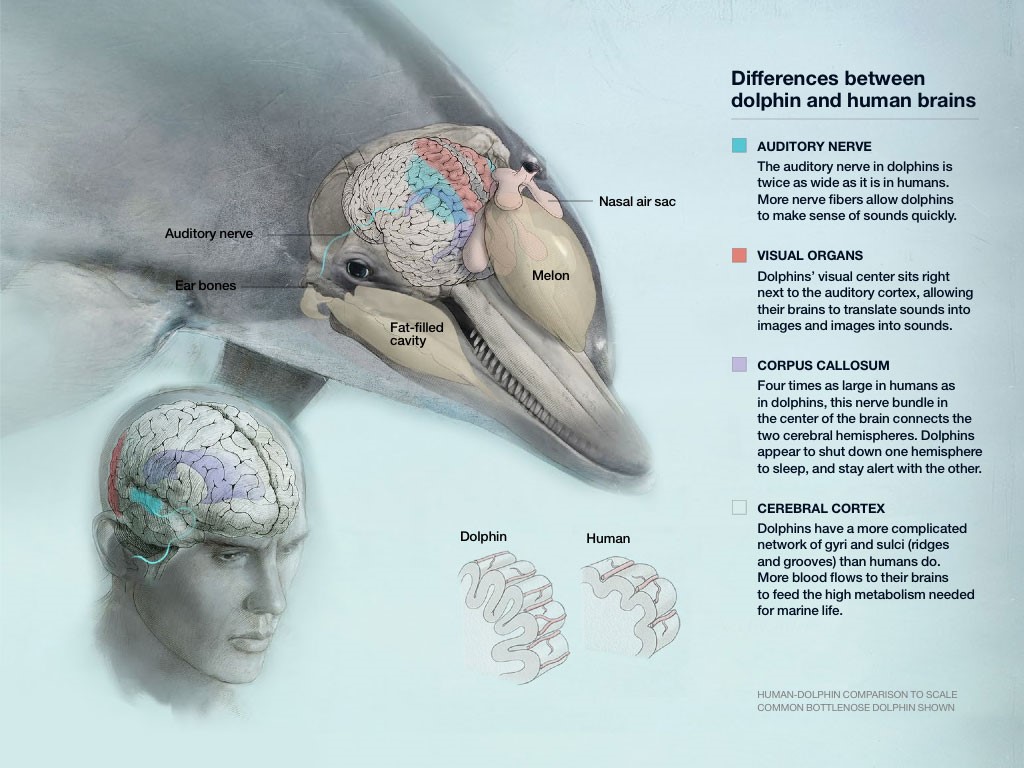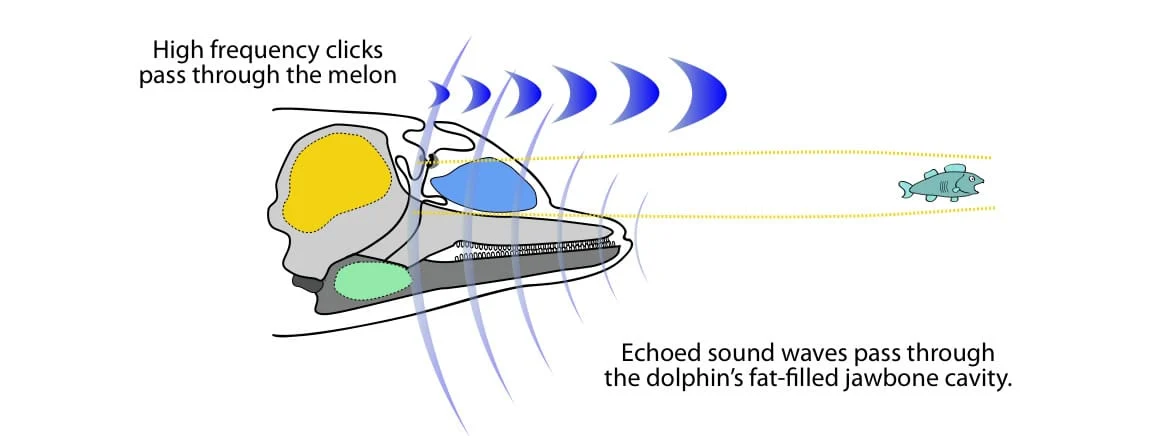
Turks and Caicos: Dolphins
"Eee-ee-ee-click-click-squeak!"
(Translation: "Keep calm and swim on!")
The Turks and Caicos Islands are home to a very special family of Atlantic bottlenose dolphins—our very own local celebrities! At the heart of this famous family is Jojo, the proud father who's been hunting and living off the shores of these islands for generations. Honestly, he's more of an islander than most of us could ever hope to be! Jojo’s been around so long, I wasn’t even here when he first showed up.
Jojo eventually met his wife, Bo, and together they started their own little dolphin family. Dreamer is their eldest, and Luna is the younger sister. Adorable names, right?

Bo, Luna, and Dreamer
(Listed top to bottom)
Screnshot from video by: @aloha_pablo and @luna_wild_dolphin
If you’ve checked out my previous blog about "Things to Do in Providenciales", you already know that swimming with dolphins is an experience worth the trip all on its own. If you're ready to turn that dream into reality, just book a trip with us at Aquacharters.com, and we’ll make sure you have an unforgettable adventure! :)
As much as I’d love to dive into the story of our famous dolphin family, I still need to do some homework to do them justice. So, before I can tell you all about Jojo and his crew, I figured I’d start by learning more about dolphins—specifically, Atlantic bottlenose dolphins.
In the meantime, here are some random (and hopefully fun!) facts I’ve found about these amazing creatures. Enjoy!
1. Dolphins Have a Unique Way of Sleeping!
Ever wondered how dolphins, who need to come up for air, manage to get some rest? It’s nothing like how we humans sleep! While we drift off into deep, unconscious sleep, blissfully unaware of the world around us, dolphins have to get creative. Unlike us, their breathing isn’t on autopilot—they have to consciously decide when to take each breath. So, if a dolphin zonked out like we do, it would forget to breathe and, well, that wouldn’t end well.
So, how do these clever creatures manage to sleep without, you know, drowning?
They’ve developed a cool trick called unihemispheric sleep—fancy term, right? Here’s how it works: dolphins only let one half of their brain sleep at a time while the other half stays wide awake. This means that while one side of their brain is dreaming of fishy adventures, the other side is on lookout duty, making sure they keep breathing and stay safe from any lurking dangers (WDC, no date b). Dolphins aren’t the only ones with this clever sleep strategy. Other marine mammals, like whales, fur seals, and sea lions, also sleep this way (Konadhode et al., 2016).

And here’s something even more fascinating—dolphins sleep with only one eye open! If the left side of their brain is resting, the left eye is open and the right is closed (kinda counter intuitive), and vice versa (WDC, no date b). It’s like having a built-in security system.
When it’s time to rest, dolphins might float peacefully at the surface, taking regular breaths, or they might swim slowly near the top of the water, taking a breath whenever they need to. In shallow waters, some dolphins even nap on the seabed, rising to the surface for air as needed (WDC, no date b).
2. Brainy Bottlenose: Big Brains, Big Smarts
Did you know that bottlenose dolphins have some seriously impressive brainpower? Their brains weigh in at around 1,600 grams, compared to the average human brain, which tips the scales at about 1,300 grams (Grimm & Miller, 2010). So, yes, these dolphins are literally big-brained!

However, it’s not just about size. Bottlenose dolphins also have a brain-to-body-weight ratio that’s higher than that of great apes. While their ratio isn’t quite as high as ours, it’s still pretty remarkable—and it’s one of the reasons why dolphins are known for their incredible intelligence and complex behaviors (Grimm & Miller, 2010).
3. Spotting the Difference: Male vs. Female Dolphins
When it comes to telling male and female bottlenose dolphins apart, the differences are pretty subtle. But if you know where to look, there’s one key giveaway. Female dolphins have mammary slits on either side of their genital slit, located on the underside of their bodies. These slits are where they nurse their young. Males, on the other hand, lack these mammary slits, making it one of the few visible differences between the sexes in this species (Cornwallmammalgroup, no date).
Another common method is to infer a dolphin's sex based on its close association with a calf. If a dolphin is frequently seen with a young calf, it’s likely a female (Cressey, 2008). We often only see Bo and her daughters together as Jojo would often be out hunting or out doing other chores. Luna, the baby calf, is often right next to her mother Bo.
Calves (baby dolphins) maintain what is called “baby position” while swimming. In this position, the calf has easy access to nursing and may gain benefits by reducing drag from swimming in it’s mom’s slip stream. When in baby position, the mom surfaces first, and the calf surfaces slightly after and just behind and to the side of its mother.
4. Dolphin Communication: How Bottlenose Dolphins Stay Connected
Ever wondered how bottlenose dolphins keep track of each other in the vast ocean? Their social lives are quite impressive, with close-knit relationships like those between mothers and their calves or bonded pairs of males, alongside a wider network of acquaintances. When it comes to hunting, they really show off their teamwork, herding schools of fish together and then taking turns diving in to grab a bite (DRC, no date).
So, how do these dolphins manage all this coordination?
They rely heavily on sound. Since sound travels through water 4.5 to 5 times faster than it does through air, dolphins use it as their primary means of communication. Dolphins are pretty versatile when it comes to making sounds, and they generally stick to two main types: whistles and clicks
Each dolphin has its own unique high-pitched whistle, known as a signature whistle. Think of it as their name—it helps them recognize one another, keep track of each other’s whereabouts, and even share their emotional state. For instance, a dolphin in distress might emit a loud version of its signature whistle to get attention (DRC, no date).
These whistles serve more than just identification. Dolphins often respond to each other’s whistles, either by whistling back or moving closer to the whistler. If a mother and her calf get separated, they’ll be whistling back and forth until they’re reunited (DRC, no date).
Clicks are their go-to tool for echolocation, allowing them to sense their surroundings much like sonar. It's how they navigate the ocean, find food, and even avoid obstacles (WDC, no date a).
Even though researchers have made great strides in understanding dolphin communication, there’s still much more to learn. But one thing is clear: dolphins have developed a remarkably sophisticated system to keep their social connections strong and their lives intertwined.
How do dolphins hear?

While dolphins do have ears, they’re not quite like ours. You won’t see any sticky-out ears on these marine mammals—they need to stay sleek and streamlined for their underwater lifestyle. Instead of relying on external ears to funnel sound, they have a unique way of hearing. Their ear canals aren’t open to the outside world. Instead, they pick up sounds through special structures in their jawbones, which transmit the sound waves directly to their inner ears (WDC, no date a). It’s a clever adaptation that allows them to hear clearly while gliding through the ocean!
Conclusion
So, there you have it—a little dive into the fascinating world of Atlantic bottlenose dolphins. Whether it’s their unique way of sleeping, their incredible communication skills, or their celebrity status here in the Turks and Caicos, these dolphins never cease to amaze.
I’m excited to keep learning more and to eventually share the full story of Jojo and his family with you. Until then, I hope these fun facts have sparked your curiosity about these incredible creatures. And if you’re ever in Providenciales, don’t miss the chance to meet them in person—trust me, it’s an experience you won’t forget! Book now with Aqua Charters!
Thanks for reading, and stay tuned for more dolphin tales!

References
Cornwallmammalgroup (no date) Bottlenose dolphin, cornwallmammalgroup. Available at: https://www.cornwallmammalgroup.org/bottlenose-dolphin (Accessed: 19 August 2024).
Cressey, D. (2008) How to sex a dolphin, Nature News. Available at: https://www.nature.com/articles/news.2008.1166#:~:text=Researchers%20generally%20have%20to%20rely,potentially%20unpleasant%20for%20the%20animal. (Accessed: 19 August 2024).
DRC (no date) Communication, Dolphin Research Center. Available at: https://dolphins.org/communication (Accessed: 19 August 2024).
Grimm, D. and Miller, G. (2010) ‘Is a Dolphin a Person?’, Science, 21 February. Available at: https://www.science.org/content/article/dolphin-person (Accessed: 19 August 2024).
Konadhode, R.R., Pelluru, D. and Shiromani, P.J. (2016) ‘Unihemispheric sleep: An Enigma for current models of sleep-wake regulation’, Sleep, 39(3), pp. 491–494. doi:10.5665/sleep.5508.
WDC (no date a) How do dolphins communicate? - whale & dolphin conservation UK, whale & dolphin conservation. Available at: https://uk.whales.org/whales-dolphins/how-do-dolphins-communicate/ (Accessed: 19 August 2024).
WDC (no date b) How do dolphins sleep? - whale and Dolphin Conservation, Whale and Dolphin Conservation. Available at: https://uk.whales.org/whales-dolphins/how-do-dolphins-sleep/ (Accessed: 19 August 2024).